Indian motorcycles were manufactured from 1901 to 1953 by a company in Springfield, Massachusetts, USA,
initially known as the Hendee Manufacturing Company but which was renamed the Indian Motocycle
Manufacturing Company in 1928. The Indian factory team took the first three places in the 1911, The Isle of
Man Tourist Trophy. During the 1910s Indian became the largest manufacturer of motorcycles in the world.
Indian’s most popular models were the Scout, made from 1920 to 1946, and the Chief, made from 1922 to
1953. The Indian Motocycle Manufacturing Company went bankrupt in 1953. A number of successor
organizations have perpetuated the name in subsequent years, including the current company which has
been manufacturing Indian motorcycles since 2006.
The Indian Motocycle Co. was founded as the Hendee Manufacturing Company by George M. Hendee and
Carl Oscar Hedstr-m. Both Hendee and Hedstr-m were former bicycle racers who teamed up to produce a
motorcycle with a 1.75 bhp, single cylinder engine in Hendee’s home town of Springfield. The bike was
successful and sales increased dramatically during the next decade.
In 1901, a prototype and two production units of the diamond framed Indian Single were successfully
designed, built and tested. The first Indian motorcycles, featuring chain drives and streamlined styling, were
sold to the public in 1902. In 1903, Indian’s co-founder and chief engineer Oscar Hedstr-m set the world
motorcycle speed record (56 mph). In 1904 the company introduced the deep red color that would become
Indian’s trademark. Production of Indian motorcycles then exceeded 500 bikes annually, rising to a peak of
32,000 in 1913. The engines of the Indian Single were built by the Aurora Firm in Illinois under license from
the Hendee Mfg. Co. until 1906.
In 1905, Indian built its first V-twin factory racer, and in following years made a strong showing in racing and
record-breaking. In 1907 the company introduced the first street version V-twin and a roadster styled after
the factory racer.
The roadster can be distinguished from the racers by the presence of twist grip linkages.One of the firm’s
most famous riders was Erwin Cannonball Baker, who set many long-distance records. In 1914, he rode an
Indian across America, from San Diego to New York, in a record 11 days, 12 hours and ten minutes. Baker’s
mount in subsequent years was the Powerplus, a side-valve V-twin, which was introduced in 1916. Its 61ci
(1000 cc), 42 degree V-twin engine was more powerful and quieter than previous designs, giving a top speed
of 60 mph (96 km/h). The Powerplus was highly successful, both as a roadster and as the basis for racing
bikes. It remained in production with few changes until 1924.
Competition success played a big part in Indian’s rapid growth and spurred technical innovation, as well. One
of the American firm’s best early results came in the Isle of Man TT in 1911, when Indian riders Godfrey,
Franklin and Moorehouse finished first, second and third. Indian star Jake DeRosier set several speed
records both in America and at Brooklands in England, and won an estimated 900 races on dirt and board
track racing. He left Indian for Excelsior and died in 1913, aged 33, of injuries sustained in a board track race
crash with Charles Fearless Balke, who later became Indian’s top rider. Work at the Indian factory was
stopped while DeRosier’s funeral procession passed.
Oscar Hedstrom left Indian in 1913 after disagreements with the Board of Directors regarding dubious
practices to inflate the company’s stock values. George Hendee resigned in 1916.
World War I
As the US entered World War I, Indian unnecessarily sold most of its Powerplus line in 1917 and 1918 to the
United States government, starving its network of dealers. This blow to domestic availability of the
motorcycles led to a loss of dealers from which Indian never quite recovered. While the motorcycles were
popular in the military, post-war demand was then taken up by other manufacturers to whom many of the
previously loyal Indian dealers turned. While Indian shared in the business boom of the 1920s, it lost
significant market share to Harley-Davidson.
Inter-war era – Scouts, Chiefs, and Fours
Indian Scouts in police service, 1920sThe Scout and Chief V-twins, introduced in the early 1920s, became
the Springfield firm’s most successful models. Designed by Charles B. Franklin, the middleweight Scout and
larger Chief shared a 42-degree V-twin engine layout. Both models gained a reputation for strength and
reliability.
Indian Four
1928 Indian 401 Indian purchased the ownership of the name, rights, and production facilities of the Ace
Motor Corporation in 1927. Production was moved to Springfield and the motorcycle was marketed as the
Indian Ace for one year.
In 1928, the Indian Ace was replaced by the Indian 401, a development of the Ace designed by Arthur O.
Lemon, former Chief Engineer at Ace, who was employed by Indian when they bought Ace. The Ace’s leading-
link forks and central coil spring were replaced by Indian’s trailing-link forks and quarter-elliptic leaf spring.
By 1929, the Indian 402 would have a stronger twin-downtube frame based on that of the 101 Scout and a
sturdier five-bearing crankshaft than the Ace, which had a three-bearing crankshaft.
1939 Indian 4, in the World’s Fair color scheme, in commemoration of the 1939 New York World’s Fair. On
display at Clark’s Trading Post, Lincoln, New Hampshire.Despite the low demand for luxury motorcycles
during the Great Depression, Indian not only continued production of the Four, but continued to develop the
motorcycle. One of the less popular versions of the Four was the upside down engine on the 1936-1937
models. While earlier (and later) Fours had IOE (inlet over exhaust) cylinder heads with overhead inlet valves
and side exhaust valves, the 1936-1937 Indian Four had a unique EOI cylinder head, with the positions
reversed. In theory, this would improve fuel vaporization. In practice, it made the cylinder head, and the
rider’s inseam, very hot. Dual carburetors, fitted in 1937, did not help. The design was returned to the original
configuration in 1938.
Like the Chief, the Four was given large, skirted fenders and plunger rear suspension in 1940. In 1941, the
18-inch wheels of previous models were replaced with 16 wheels with balloon tires. Recognition of the
historical significance of the 1940 four-cylinder model was made with an August 2006 United States Postal
Service 39-cent stamp issue, part of a four panel set entitled American Motorcycles.
The Indian Four was discontinued in 1942.
1928 Indian Big Chief with sidecarThe first 1922 model Chief had a 1000 cc (61ci) engine based on that of
the Powerplus; a year later the engine was enlarged to 1,200 cc (73 ci). Numerous improvements were made
over the years, including adoption of a front brake in 1928.
In 1930, Indian merged with DuPont Motors Company. DuPont Motors founder E. Paul DuPont ceased
production of duPont automobiles and concentrated the company’s resources on Indian. DuPont’s paint
industry connections resulted in no fewer than 24 color options being offered in 1934. Models of that era
featured Indian’s famous head-dress logo on the gas tank. Indian’s huge Springfield factory was known as
the Wigwam, and native American imagery was much used in advertising.
In 1940, Indian sold nearly as many motorcycles as its major rival, Harley-Davidson. At the time, Indian
represented the only true American-made heavyweight cruiser alternative to Harley-Davidson. During this
time, the company also manufactured other products such as aircraft engines, bicycles, boat motors and air
conditioners.
In 1940, all models were fitted with the large skirted fenders that became an Indian trademark, and the Chief
gained a new sprung frame that was superior to rival Harley’s unsprung rear end. The 1940s Chiefs were
handsome and comfortable machines, capable of 85 mph (136 km/h) in standard form and over 100 mph
(160 km/h) when tuned, although their increased weight hampered acceleration.
In 1950, the V-twin engine was enlarged to 1,300 cc (79 cu in) and telescopic forks were adopted. But
Indian’s financial problems meant that few bikes were built. Production of the Chief ended in 1953.
World War II
1939 Indian Dispatch Tow, 3-wheeler
1942 Indian Scout 500, the 741, used by the US ArmyChiefs, Scouts, and Junior Scouts were all used for
various purposes by the United States Army in World War II. However, none of these could unseat the Harley-
Davidson WLA as the motorcycle mainly used by the Army. The early version was based on the 750 cc (46
cu in) Scout 640 compared directly with Harley’s offer, the WLA, but was either too expensive or heavy, or a
combination of both. Indians eventual offer, the 500 cc (31 cu in) 741, was underpowered and could not
compete with the WLA. Indian also offered a version based on the 1,200 cc (73 cu in) Chief, the 344.
Approximately 1,000 experimental versions mounting the 750 cc motor sideways and utilising shaft drive, as
on a modern Moto Guzzi, the 841, was also tried.
During World War II, the US Army requested experimental motorcycle designs suitable for desert fighting. In
response to this request, Indian designed and built the 841. Approximately 1,000 841 models were built.
The Indian 841 was heavily inspired by the BMW R71 motorcycle used by the German Army at the time, as
was its competitor, the Harley-Davidson XA. However, unlike the XA, the 841 was not a copy of the R71.
Although its tubular frame, plunger rear suspension, and shaft drive were similar to the BMW’s, the 841 was
different from the BMW in several aspects, most noticeably so with its 90-degree longitudinal-crankshaft V-
twin engine and girder fork.
The Indian 841 and the Harley-Davidson XA were both tested by the Army, but neither motorcycle was
adopted for wider military use. It was determined that the Jeep was more suitable for the roles and missions
for which these motorcycles had been intended.
In 1945, a group headed by Ralph B. Rogers purchased a controlling interest of the company. On November
1, 1945, duPont formally turned the operations of Indian over to Rogers.

Under Rogers’s control, Indian discontinued the Scout and began to manufacture lightweight motorcycles
such as the 149 Arrow, the Super Scout 249, both introduced in 1949, and the 250 Warrior, introduced in
1950. These bikes suffered from poor quality and a lack of development. Production of traditional Indians was
extremely limited in 1949, and no 1949 Chiefs are known to exist. Manufacture of all products was halted in
1953.
Brockhouse Engineering acquired the rights to the Indian name after it went under in 1953. They imported
Royal Enfield motorcycles from England, mildly customized them in the US depending on the model and sold
them as Indians from 1955 to 1960. Almost all Royal Enfield models had a corresponding Indian model in the
USA. The models were Indian Chief, Trailblazer, Apache (all three were 700 twins), Tomahawk (500 twin),
Woodsman (500 single), Westerner (500 single), Hounds Arrow (250 single), Fire Arrow (250 single), Lance
(150 2-stroke single) and a 3-wheeled Patrol Car (350 cc single).
In 1960, the Indian name was bought by AMC of England. Royal Enfield being their competition, they abruptly
stopped all Enfield-based Indian models except the 700 cc Chief. Their plan was to sell Matchless and AJS
motorcycles badged as Indians. However, the venture ended when AMC itself went into liquidation in 1962.
1972 Indian MM-5A minibikeFrom the 1960s, entrepreneur Floyd Clymer began using the Indian name,
apparently without purchasing it from the last known legitimate trademark holder. He attached it to imported
motorcycles, commissioned to Italian ex-pilot and engineer Leopoldo Tartarini, owner of Italjet Moto, to
manufacture Minarelli-engined 50 cc minibikes under the Indian Papoose name. These were so successful
that Clymer also commissioned Tartarini to build full-size Indian motorcycles based on the Italjet Grifon
design, but fitted firstly with Royal Enfield Interceptor 750 cc parallel-twin engines, then with Velocette 500 cc
single-cylinder Thruxton engines.
After Clymer’s death in 1970 his widow sold the alleged Indian trademark to Los Angeles attorney Alan
Newman, who continued to import minicycles made by ItalJet, and later manufactured in a wholly owned
assembly plant located in Taipei (Taiwan). Several models with engine displacement between 50 cc and 175
cc were produced, mostly fitted with Italian two-stroke engines made either by Italjet or Franco Morini, but the
fortunes of this venture didn’t last long. By 1975, sales were dwindling, and in January 1977, the company
was declared bankrupt. The right to the brand name passed through a succession of owners and became a
subject of competing claims in the 1980s, finally decided in December 1998 by a Federal bankruptcy court in
Denver, Colorado.
Indian Motorcycle Company of America (1999–2003)
The Indian Motorcycle Company of America was formed from the merger of nine companies, including
manufacturer California Motorcycle Company (CMC) and IMCOA Licensing America Inc. which was awarded
the Indian trademark by the Federal District Court of Colorado in 1998. The new company began
manufacturing Indian-badged motorcycles in 1999 at the former CMC’s facilities in Gilroy, California. The
first Gilroy Indian model was a new design called the Chief. Scout and Spirit models were also manufactured
from 2001. These bikes were initially made with off-the-shelf SS engines, but used the 100-cubic-inch
(1,600 cm3) Powerplus engine design from 2002 to 2003. The Indian Motorcycle Corporation went into
bankruptcy and ceased all production operations in Gilroy on September 19, 2003.
Indian Motorcycle Company (since 2006)
Headquarters Kings Mountain, North Carolina, USA
On July 20, 2006, the newly-formed Indian Motorcycle Company, owned largely by Stellican Limited, a
London-based private equity firm, announced its new home in Kings Mountain, North Carolina, where it has
restarted the Indian motorcycle brand, manufacturing Indian Chief motorcycles in limited numbers, with a
focus on exclusivity rather than performance, like a ‘luxury’ watch. Starting out exactly where the defunct
Gilroy IMC operation left off in 2003 all of the new models are continuation models based on the new series of
motorcycles developed in 1999. The 2009 Indian Chief incorporated a redesigned 105-cubic-inch (1,720 cc)
Powerplus V-twin powertrain with electronic closed-loop sequential-port fuel injection and a charging system
providing increased capacity for the electronic fuel injection. Indian was bought out by Polaris Ind. in 2011.
We stil haven’t a 2013 model and don’t know when the plant is moving to Iowa. Indian, M otorcycle sales were
down 6% ending Sept. 30, 2013.
Land speed records
Between 1962 and 1967, Burt Munro from New Zealand used a modified 1920s Indian Scout to set a number
of land speed records, as dramatised in the 2005 film The World’s Fastest Indian.
Polaris Announces A Brand New Engine For Indian
Thunder Stroke 111 Engine Powering
The New 2014 Indian Motorcycle
111 cubic inches
More than 115 ft-lbs of torque
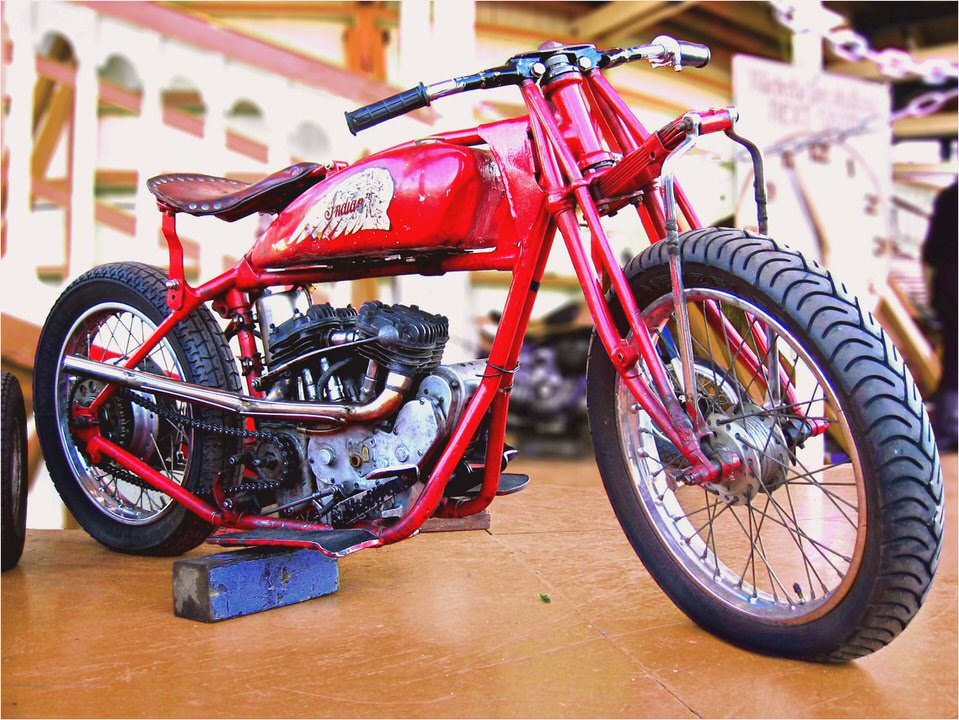
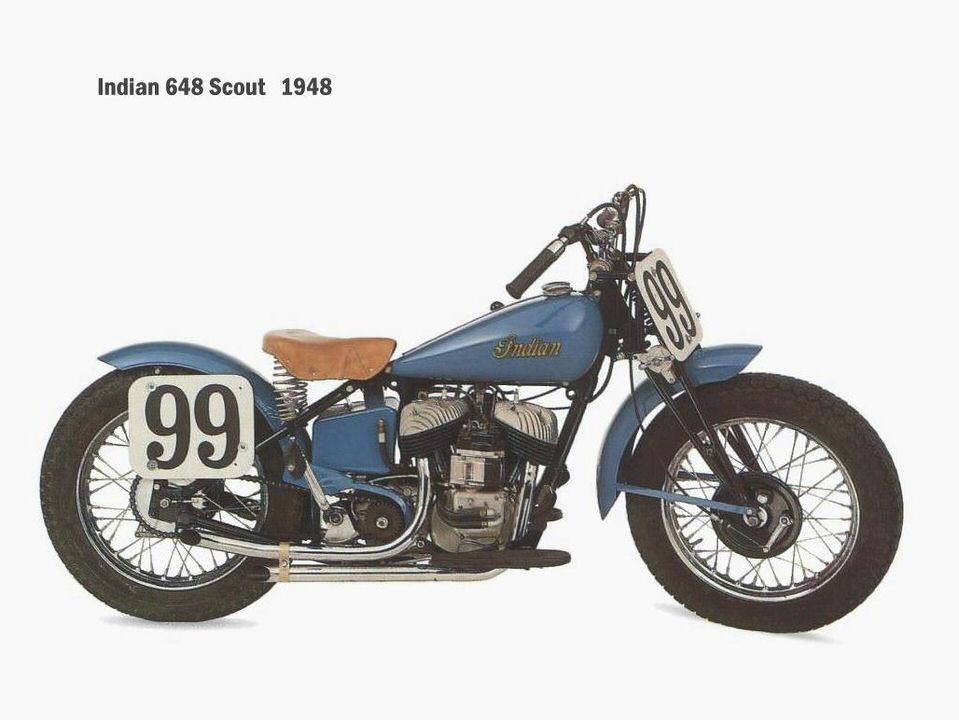
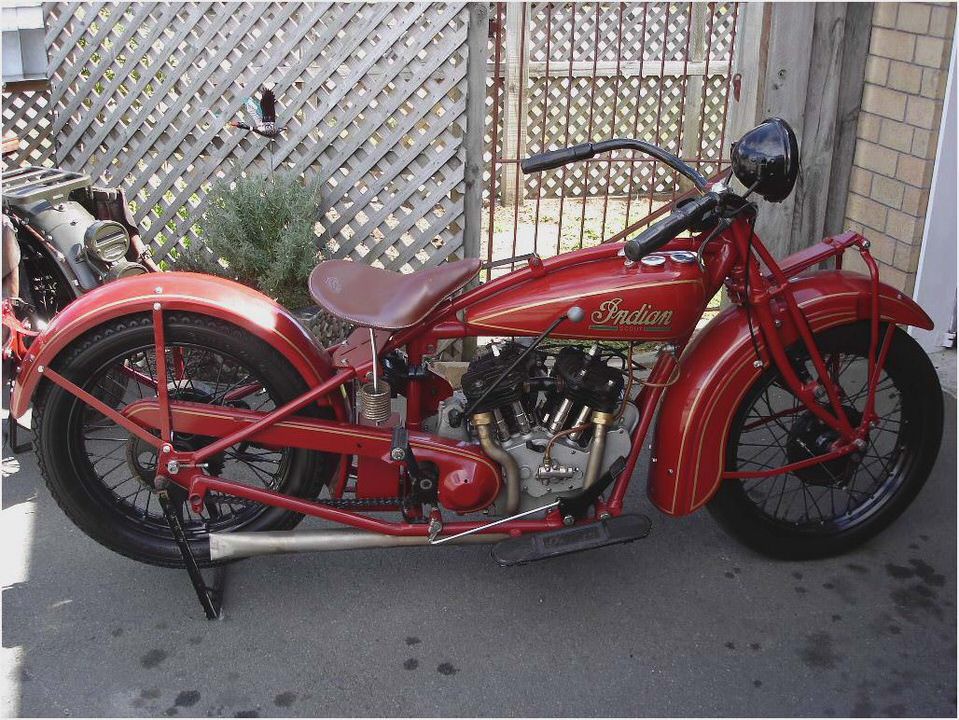
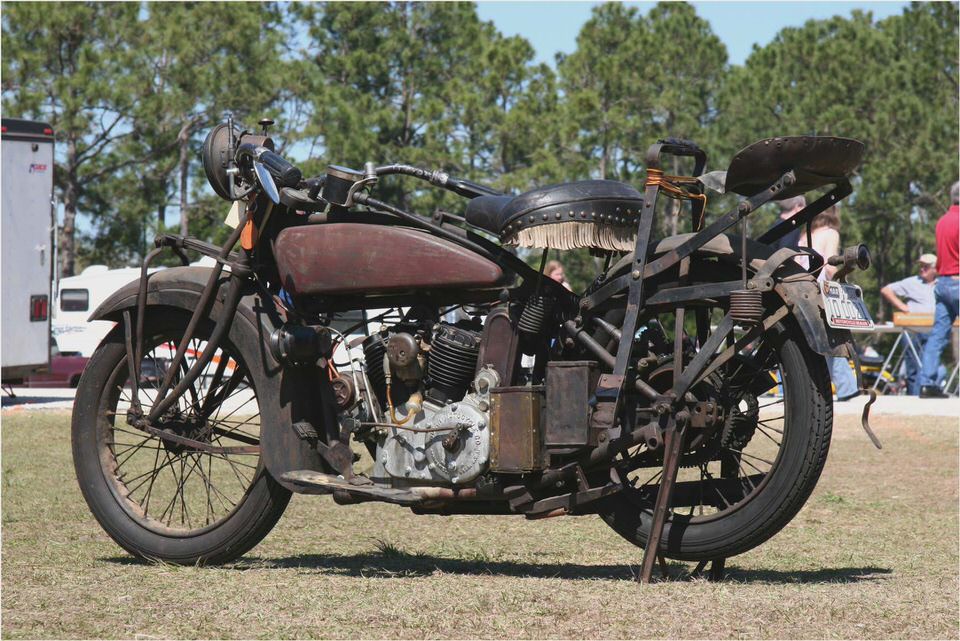
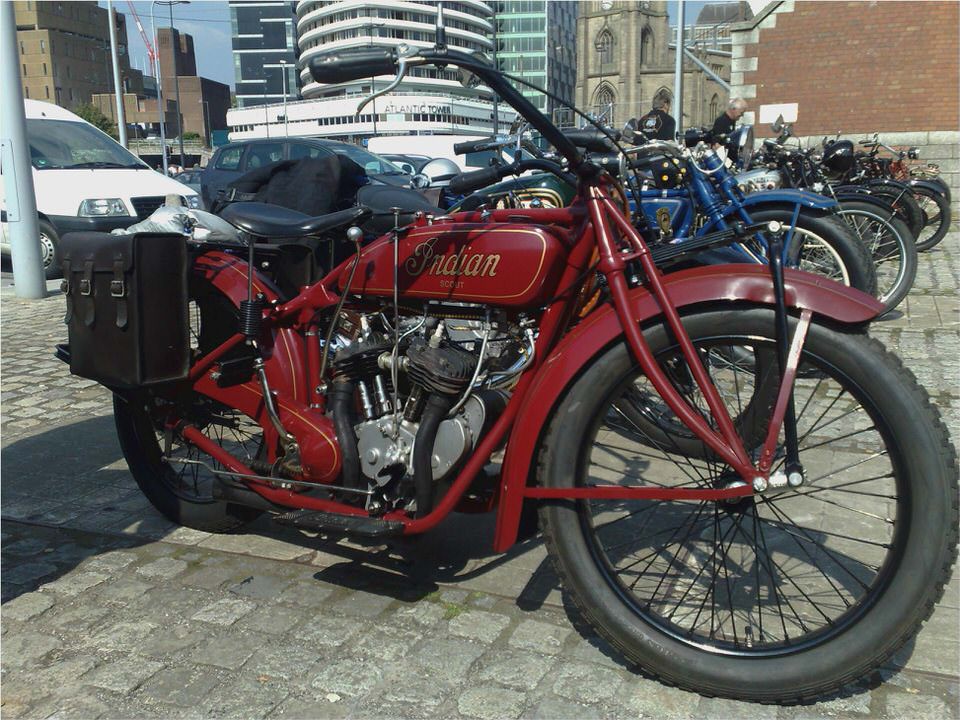
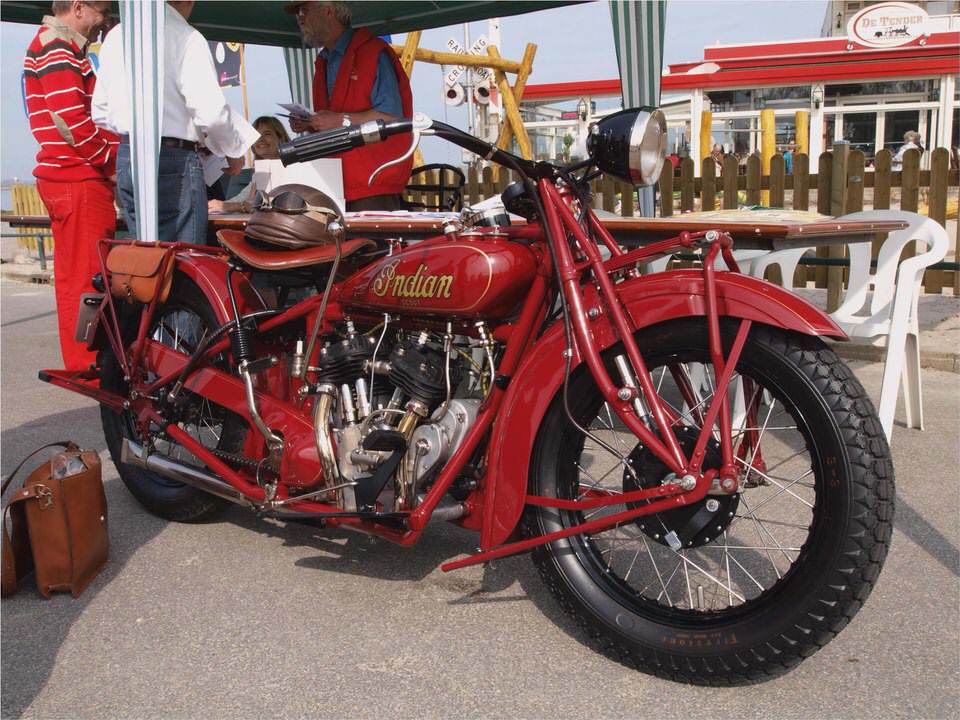
- Indian Motorcycles, Indian Spirit, Indian Scout
- Indian Scout motorcycle Artofwheels’s Classic Car, Motorcycle…
- Indian Scouts A Classic American Motorcycle Brand Cars show
- Indian Sport Scout 750cc: 1934-1942
- INDIAN THE GOLDEN AGE OF ICONS THE SCOUT, CHIEF, AND THE BIG CHIEF …
